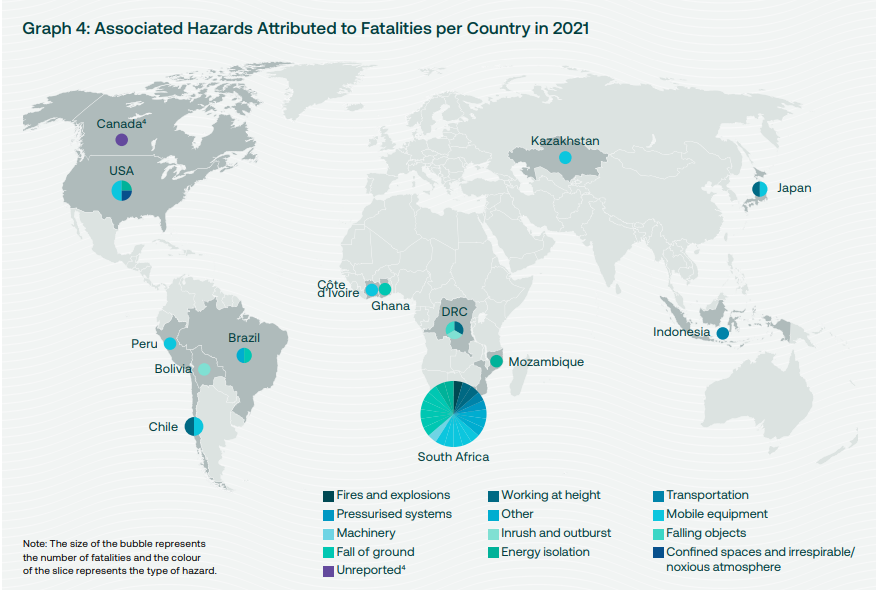
The International Council on Mining and Metals (ICMM) has released its ‘Safety Performance: Benchmarking Progress of ICMM Company Members in 2021’ report.
According to the report, the number of work-related fatalities in the mining sector in 2021 remained fairly consistent with the prior year, seeing 43 deaths compared to 44 in 2020. This marks the lowest annual total of deaths since the ICMM began its report series in 2012, however the report still makes “disturbing reading” according to the council.
“Despite the industry’s focus on operational, cultural and leadership transformation that has reduced fatalities in recent years, we have still not achieved our goal of zero harm,” ICMM President and CEO Rohitesh Dhawan said in the foreword of the report. “Any year with even a single fatality is unacceptable. This means, as an industry, we must and will continue to work to improve our safety performance so that every single worker returns home safely.”
The 2021 report in numbers
In 2021, the leading cause of fatalities in the mining sector was identified to be mobile vehicles, replacing rock falls as the most prolific killer of miners worldwide. Mobile vehicles accounted for 28% of deaths across 2.5 billion work hours, followed by rock falls accounting for just shy of 20% of deaths, and then height-related dangers and electrocution.
The report revealed that for approximately two-thirds of the deaths, control measures remained in place but proved ineffective at preventing the death. In addition to mobile vehicles being the greatest cause of fatalities in 2021, it is also the most geographically spread, across seven countries.
In terms of geography, around half of mining deaths during 2021 happened in South Africa, while the highest death rate compared to hours worked came from Côte d’Ivoire, followed by Bolivia. These death rates are largely skewed however due to the low number of hours worked, as each of these countries saw just one death each.
The report identified three incidents with resulted in more than one fatality in 2021, which equals the number of multiple fatality incidents in 2020.
As a general trend, the data shows a decrease in annual fatalities since 2016 but appears to have levelled off in the last two years, if the Brumadhino tailings dam collapse of 2019 - which saw 250 workers lose their lives - is not considered.
Initiatives to improve worker safety
With the 2021 report revealing the highest number of fatalities caused by mobile vehicle incidents since 2018, the ICMM will plough on with its collaborative Innovation for Cleaner Safer Vehicle (ICSV) initiative to identify and promote collision avoidance technologies, process improvements, and training to help eliminate fatalities from interactions with vehicles.
The report also suggests that, “action to target foundational components of a robust safety culture such as safety leadership and human performance could be more effective at addressing the underlying causes of the fatalities.”
ICMM is working with its members to share the importance of critical controls for facilities in order to reduce fatalities, and this will remain a main focus of its work going forwards, the organisation said.

























